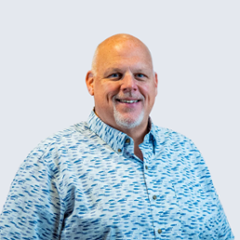Inventory management is an essential part of pharmacy operations. Yet it can also mean hours of tedium. Many pharmacies just conduct a count when they have time and leave it at that. They’re saving a few hours in the short term, but they’re ultimately losing even more time and money.
This blog post discusses why you should view your inventory as a powerful resource. We’ll also show you the solution needed to make that possible. With the right tactics and tools, your pharmacy can harness its inventory to save money, streamline operations and enhance strategy.
The Power of Knowing
Unfortunately, too many pharmacies don’t have the time or tools to actively manage their inventory. If they do, they may rely on manual processes, outdated technology or “repurposed” solutions that aren’t designed to handle pharmacy inventory. These cumbersome approaches take up hours that pharmacy professionals can’t spare.
Besides being tedious and time-consuming, these methods lead to inaccurate counts in terms of stock on your shelves and its value. Without an effective inventory management solution, pharmacies can’t consistently spot excess stock that may result in spoilage, might be returned or could be transferred to another location. They also can’t gauge low stock. That often leads to costly and stressful last-minute reorders.
Failing to replenish on time means patients can’t get their medications. It impacts their medical treatment and affects their confidence in your pharmacy. Your team is left scrambling to refill the shelves while apologizing to the patients counting on them. Pharmacies lose patients, and staff lose their patience. Put simply, a pharmacy’s issues with inventory soon become everyone’s issue.
Questions Your Inventory Should Answer
With the right solution in place, pharmacies can:
- Drive savings
- Simplify their work
- Replenish items on-time
- Maintain the right levels of stock
- Avoid unnecessary orders
Instead of relying on intuition or shaking bottles, successful pharmacies leverage their inventory to generate business intelligence that guides their strategy. The right technology empowers them to analyze usage, forecast needs and anticipate issues.
So, what does smarter inventory “say” to successful pharmacies? Here are a few questions your inventory should be able to answer.
1. What’s My Actual Usage, and What Does It Tell Me?
Your inventory is not a static resource. You’re dispensing drugs throughout the day alongside advising patients, administering vaccines, making purchases and fulfilling other responsibilities (many of which probably weren’t even covered in pharmacy school). It’s hard to keep relentlessly updating your actual counts—which means it’s easy to miss out-of-stocks, potential spoilage or even shrinkage.
The physical inventory you conducted yesterday may not reflect today’s stock. But with a perpetual inventory in place, you have a dynamic, constantly updated count based on the actual value paid. Data-driven inventory and flexible reporting capabilities allow you to see your exact usage in real time.
Real-time reports provide pharmacy-wide insight into inventory levels, variances and stale inventory. Now, you can make data-driven decisions with enhanced business intelligence. You can also track products through their entire lifecycle, including those at other locations. Instead of relying on outdated counts, intuition or running back and forth from your stock room, you have updated information at your fingertips to make better decisions and save time.
2. What Do I Really Need to Order?
Your inventory is more than what’s literally on your shelves. In terms of the items immediately on hand, it’s important to know how much is left and what’s nearly depleted. It’s also important to know which products have already been ordered. But you can’t just conduct a physical inventory when you’re unsure. Just checking the shelves takes you away from patients and eats up more time.
Instead, trust in an accurate inventory updated in real time. Best-in-class systems include flexible automation based on multiple replenishment models. For example, you may preset min/max values based on usage and days-supply requirements. Or you might set it to reorder when only three days of inventory are left automatically.
Integration with purchasing lets you see which items are “on the way” to avoid unnecessary orders. Because inventory and purchasing are linked, you can always see the true value of your inventory (based on the amount you paid and not the current catalog price).
3. What are My High-Impact Items?
You want to keep an eye on your entire inventory. Yet some items affect your patients and your business more than others.
The most expensive items are an obvious factor. However, some frequently sold items can also have a significant impact. Even with a lower price, some generics (often in terms of their SKU as opposed to a unit) can still make a huge financial difference.
A smarter inventory solution with cycle counts analyzes these high-cost, high-movement items. That allows you to make decisions based on understanding products with the highest impact on patients and your business. You may uncover new revenue or savings opportunities—for example, by reducing on-hand stock or finding areas to increase high-value sales. Cycle counts also enable you to assess discrepancies with your total inventory or possible diversions.
4. What Needs to Go? Where Can I Send It?
Excess stock does more than take up space. You paid for every item on your shelves. If they’re staying there, they’ve cost you money and are now eating into your margins. Depending on how long they’re up there, you also risk spoilage: you lose money on that item and never recuperate the loss.
On the other hand, by spotting excess inventory early, you can avoid spoilage: you may be able to return items to the manufacturer or transfer them to another branch of your pharmacy or department within your health system. But this requires a solution that combines transparency and convenience.
The right technology integrates inventory and purchasing data and streamlines these functions. For example, it may be as simple as running a report for excess or items that are “purchased-not-dispensed.” These systems don’t eliminate the need for physical inventories but enhance it so you have this information available at any point.
The Importance of Data Analytics
Successful pharmacies can easily utilize data and analytics for their inventory. They also view their inventory as a source of business intelligence. Yet these pharmacies also leverage best-in-class technology to meet these goals and thrive in a competitive pharmacy industry.
To learn more about how pharmacies implement these solutions, join our webinar on September 25.




.png)


